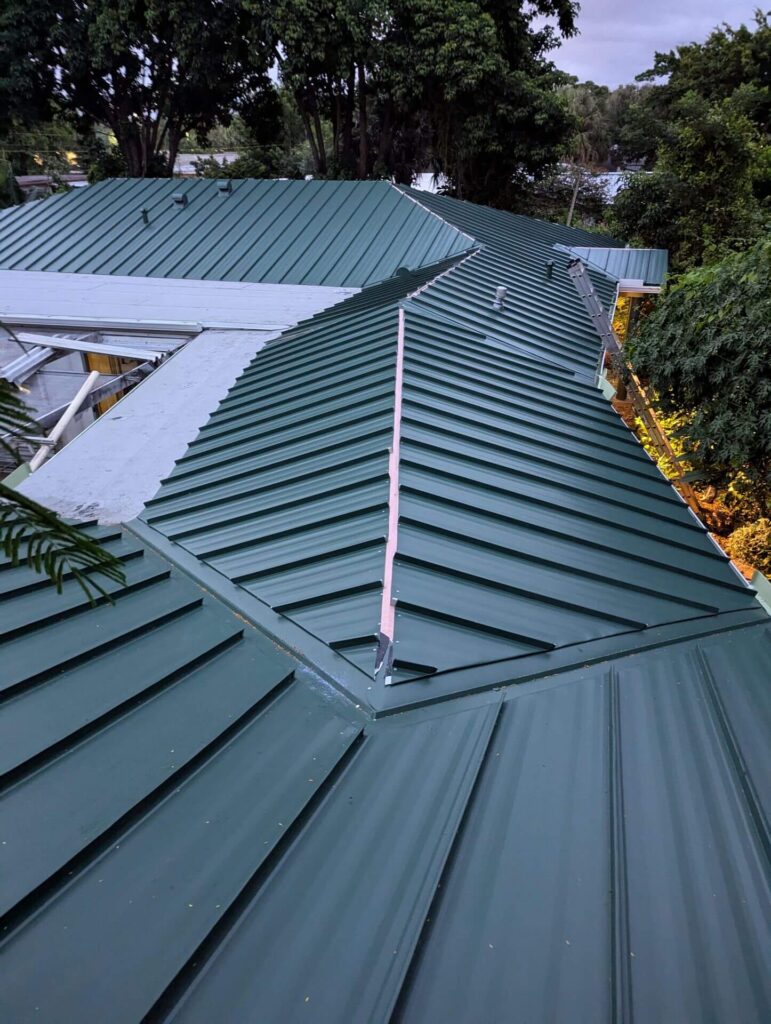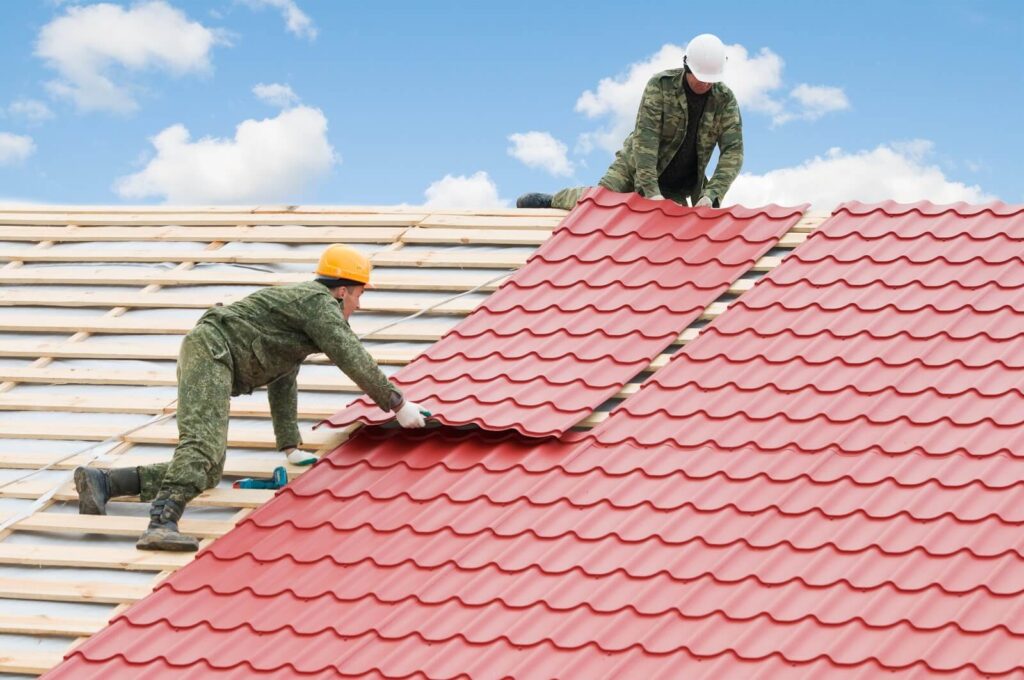West Palm Beach’s stunning beaches, vibrant culture, and year-round sunshine might be the first things that come to mind when you think about this beautiful region of Florida. However, this part of the Florida coast also shares some all-too-common climate problems: intense heat, lots of rainfall, and the constant threat of hurricanes. These environmental factors can cause a lot of problems for residential home structures and roofs, prompting homeowners to lean into roofing solutions that have a long lifespan.

In Florida, a visual roof redesign isn’t just about curating a look that matches your personal style (though this is an undeniable plus); it’s about energy efficiency. A properly installed roof rains defensive qualities that could play a massive role in blocking out the heat, trapping it or allowing it to permeate through the home setting, depending on the weather/temperature. Once again, those cursed Florida climate downsides rear their ugly head, so plan and coordinate roofing materials and design choices effectively.
Residential roofing in Florida permits the use of fashionable metal plated designs, standard roofing tile (or even tile in general), and the critically acclaimed asphalt shingle pocket of roofing products. These clearly suggest stealth options, each with its own “win condition” as it might result in varying weather patterns that force your pocketbook into more expensive “roof-adjacent” product costs.
Understanding the Florida Climate and Its Impact on Roofing
Tropical South Florida throughout the seasons battling varying degrees of humidity, fighting a sopping monsoon season, and preparing for the marauding approach of a hurricane ready to spit rain and vigorously flail tree branches around. Hurricanes are responsible for nearly all homeowner headaches, including repairing waterproofing (i.e., the roof shingles) to ensure that the precipitation does not cause leaks, which would trigger a domino-like effect of additional (and compounding) water damage.
For example, from the first paragraph, “the constant contact with moisture and the effects of extreme weather surely means that the shingles (if applicable) deteriorate at a faster rate, …” which also implies that there is a higher probability that intense winds will tirelessly and continually bat at the shingles, causing them to eventually lift or break away
Popular Roofing Materials for West Palm Beach Homes

When debating what type of roofing material to use in Florida, remember to think about what will work best with your location. Florida has a unique climate to consider – high humidity, lots of intense sun, and many possible rainy days. Therefore, the first material that comes to mind is metal. Metal does well in humid environments because it is resistant to this type of climate and holds up well to wind. Not to mention, it reflects the sun from beating down on your home. With a life span of most likely over 50 years, this material can be worth the higher price tag in the long run.
The next material that may come to mind is tile. Tile is known as a higher-end, more attractive roof-type material. Clay or concrete tile rooftops are known for being terrifically fire-resistant and having a longer lifespan. They are advantageous for being resistant to rot and insects and for keeping cool because they can allow for increased air flow. The only downside that becomes evident is if the owner wants to switch rooftop colors. This type needs to be torn down and completely rebuilt; a simple paint job cannot suffice. Who knows, the added weight and sturdiness of this material might be worth it during tornados or hurricanes!
As for the occasional spring or heavy winter, you will want to make sure that the rooftop materials used are the common and average materials seen nationwide. Most areas with beautiful climates are often labeled “high-wind” areas because a hurricane or intense storm during the winter can wipe out or severely damage several homes in a community. With the right precautions and construction taken, you may still have a beautiful home ready to take on the next bit of rough weather. The most common materials, and of seemingly not always thought of, are slate and architectural shingles. Technological advances in these materials now allow for heated systems to be installed in homes to prevent heavy snow or frost.
Choosing the Right Roofing Contractor
Picking a dependable and worthy roofing contractor in West Palm Beach is extremely important when it comes to the safety and lifespan of your home. Make sure that the roofing contractor has the proper license and insurance. If the contractor does not have the appropriate license, they will not be in compliance with regional regulation and building codes, and if the contractor is not insured, you could be held accountable for accidents that happen on your property while construction is taking place. Be sure to make the best decision for your home by asking for proof of these before making a decision.
Online reviews can be pretty damning in the current age of technology. Review websites and research about their local communities to gain information about what kind of reputation they might have. Some get rave reviews about always showing up on time, being efficient, and easy to work with, while others will complain about the poor quality of the job that was done, or worse, never actually finishing the job they were paid to do.
West Palm Beach is another one of the many cities found in Southern Florida— otherwise known as Hurricane Alley—and is right along the Atlantic coast, surrounded by various bodies of saltwater. As Floridians, we know how fickle the weather here can be, so it is important to keep in mind that a small shower could eventually turn into a statewide flooding event or category five hurricane. If your home is near the coast, helicopters and planes are consistently flying overhead, and because of the commonly sought-after barrel tiled roof—or other easily damaged roofing styles—having the right roofing company to tend to the occasional broken tile or eventual storm is absolutely necessary. Unlike some things in life, roofing is not one-size-fits-all. The regions in which you and your home reside matter more than you think, and that is especially true when looking at the list of places many of these non-Floridian roofing companies are well-known and established in. Coastal towns and cities are infamous for having tough, blunt building codes due to the unpredictable and dangerous climates they reside in.
The Roofing Installation Process
A roof installation is a large-scale project with several key steps. First, there’s a consultation step during which the contractor assesses your roof and tells you what your options are. This part of the project could take several days, depending on all the variables!

In the middle, there’s the task of getting any necessary permits, which might take a little while longer depending on where you live.
The installation itself takes a few days to a week for standard-size homes. (For reference, our roof ended up taking about a week with snow delays.) The team will be over every day (weather permitting), and you may need to coordinate things like parking spots or contingency plans in case bad weather leaves your roof half-completed overnight or over the weekend, so definitely keep that in mind.
There also might be inspections. Our city requires separate deck inspections and final inspections, which require the homeowner to be home during the inspector’s hours (for us, it was 1:00-4:00). Be aware of what inspections you need and proactively schedule them—you might run into scheduling delays that then delay your overall timeline.
I’d call all of this the ’emotional preparation’ you need to do for this project: the mental psych-up you need to do to face the project guts-first. Your roof is not going to fall in! But having this big-picture goal in mind will hopefully give you options as to how to best attack the immediate problem knowing that the ultimate end for your house CA…this…this is the longest sentence ever.
Homeowners in West Palm Beach need to consider the type of roofing—both the material and the contractor—that fits the region’s “uniqueness.”
Because we live in a tropical rainforest climate, we have a ton of humidity and storms (especially in certain seasons). That kind of weather will play a role in the kind of material you choose — metal, tile, asphalt shingles. There are strengths and weaknesses to each of these, so research what fits your budget and what works best for your house and the region.
Contractors are the same way. Read a handful of “how to choose a contractor” pieces, and you’ll easily find the keys to look for the right person. At its core, though, it comes down to hiring a qualified, competent person for the job so they can tell you more about what you have. In a lot of conversations, I’ve had with teams of construction workers, they’ll talk a lot about keeping and maintaining the type of roof you’ve got.
There’s also an argument for years lasting and how to take good care of your roof—you should do at least a handful of self-inspections each year just for that. Look through a list of potential hazards so you can keep them off your roof or away from your alcove. A lot of the damage you can do might be stepping on parts of the roof you shouldn’t; another might be pressure washing when you should avoid it. Just be sure to know some of the “signs of X” lists for the kinds of maintenance/upkeep you need to do.
